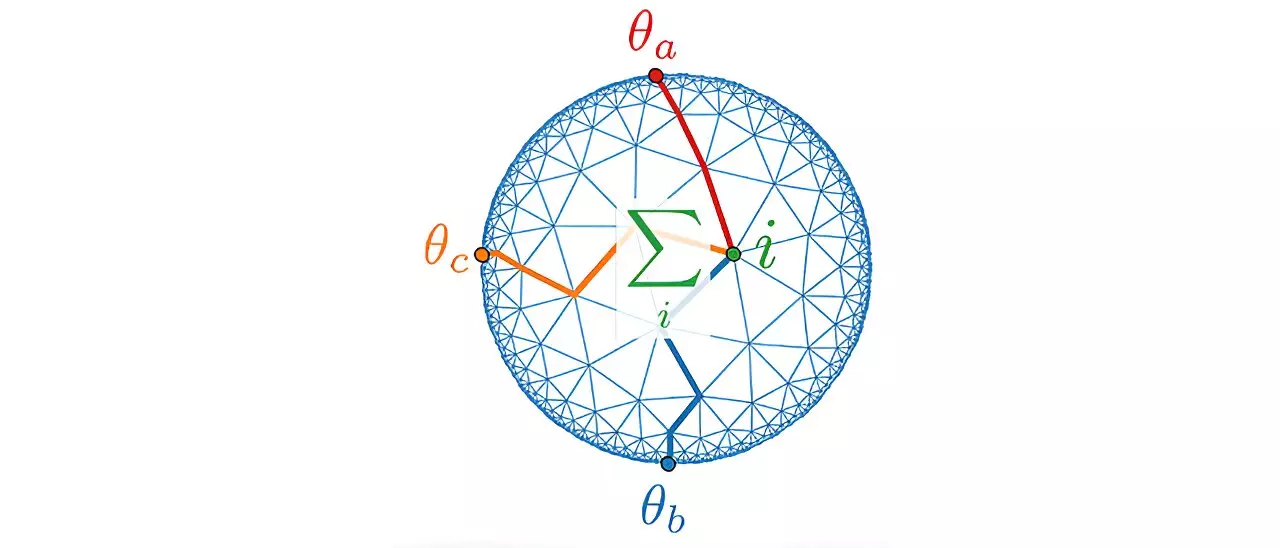Gravity, a fundamental force that governs the motions of celestial bodies, has long captivated scientists and philosophers alike. With advancements in physics, we have successfully demystified gravity’s influence over vast distances, allowing for precise calculations of planetary orbits and accurate predictions of tidal patterns. The endeavor to send spacecraft into the far reaches of space exemplifies our grasp of gravitational principles over significant scales. However, the challenge arises when we venture into the quantum realm—where classical descriptions of gravity falter. The intricate nature of gravity at this scale poses profound questions that remain unanswered.
Recent insights into gravitational theory highlight the need for a comprehensive understanding of gravity when dealing with phenomena such as the formation of black holes or the conditions present during the Big Bang. As Professor Johanna Erdmenger, an esteemed figure in theoretical physics from the University of Würzburg in Germany, articulates, to grasp these concepts, one must delve into the quantum characteristics of gravity. Classical mechanics breaks down under extreme conditions, underscoring the urgency for innovative theories that encompass gravity across all scales—from the colossal movements of galaxies to the infinitesimal interactions of subatomic particles.
One of the most significant advancements in this pursuit is the Anti-de-Sitter/Conformal Field Theory (AdS/CFT) correspondence. This theoretical framework proposes a profound relationship between complex gravitational theories articulated in higher-dimensional spaces and simpler quantum theories defined at the boundaries of such spaces. The Anti-de-Sitter space—characterized by its inward curvature—provides a mathematical playground where the properties of gravity can be illuminated by examining the quantum dynamics present at its edges. Essentially, the AdS/CFT correspondence posits that intricate gravitational behaviors within this curved spacetime can be mirrored by quantum interactions at the boundary, echoing the principles of holography.
Recently, Professor Erdmenger and her research team embarked on an innovative mission to empirically validate some of the predictions associated with the AdS/CFT correspondence. Their methodology ingeniously employs a branched electrical circuit designed to simulate curved spacetime. By manipulating electrical signals across various branch points, they can mimic the gravitational dynamics that would occur at different locations within a theoretical spacetime continuum. This groundbreaking approach offers a tangible means to observe the interplay between gravity and quantum mechanics in a controlled environment.
The implications of their work are far-reaching; creating a connection between abstract theoretical constructs and actual physical experiments fosters a deeper understanding of gravity’s nature. The results, recently published in the journal *Physical Review Letters*, indicate promising alignment between the predictions of the AdS/CFT theory and the experimental outcomes observed in the circuit. Thus, the team is poised to push forward, transitioning their theoretical framework into practice.
Beyond scientific curiosity, the implications of this research could resonate in technological realms as well. The circuits developed have practical applications anticipated to enhance quantum technology, potentially enabling the transmission of electrical signals with minimized loss. This superlative efficiency is attributed to the simulated curvature of space, which serves to bundle and stabilize the signals—an intriguing intersection of theoretical physics and engineering innovation.
The ongoing exploration of gravity at quantum scales stands at a pivotal juncture. With initiatives like those led by Professor Erdmenger, we inch closer to reconciling classical gravitational theories with the enigmatic properties presented by the quantum world. As we endeavor to harness these insights, both scientific and technological landscapes are set to transform, leading to a greater grasp of the universe’s fundamental forces. The quest to unravel gravity thus remains a critical and exciting frontier in modern physics.


Leave a Reply